#PVC Extrusion Production Line
Explore tagged Tumblr posts
Text
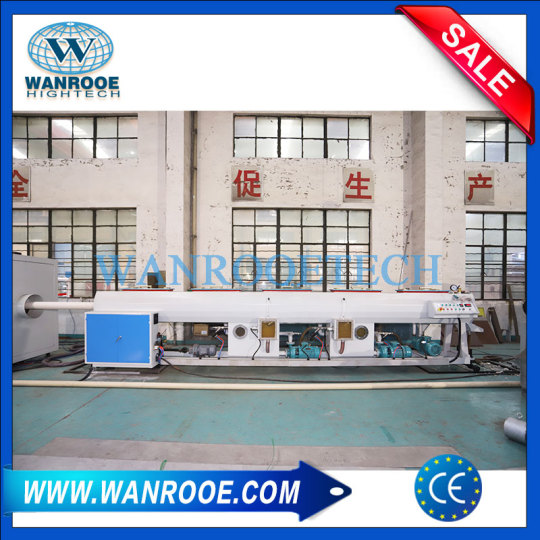
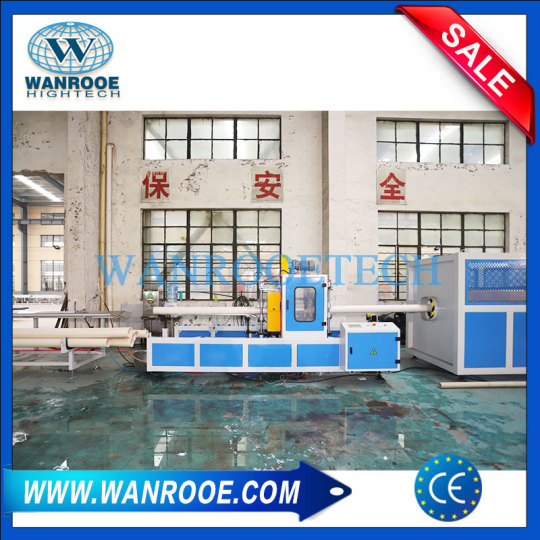



PVC plastic pipe material production line is mainly used in the area of agricultural water supply system, architectural water supply system, pavement of cables, etc. as well as PVC pipe material of all sorts of pipe caliber and wall thickness. This machine group consists mainly of twin conical (parallel) screws extruder, vacuum calibrating tank, haul-off unit, cutting unit, tilter, etc. single screw extruder and haul-off unit have applied imported A/C inverter, both vacuum pump and driving motor have applied excellent products. The drawing machine includes two-claw type, three-claw type, four-claw type, six-claw type, eight-claw type, etc. Saw cutting or planet cutting can be applied, it is additionally applied with length measuring meter and thickness increasing device, the property of machine group is reliable, the production efficiency is high. It has reached world advanced level.
0 notes
Text
The $10 Billion Opportunity: What’s Driving the Explosive Growth of the Medical Tubing Market?

Introduction
The global medical tubing market is undergoing significant expansion, propelled by advancements in medical device technology, the increasing prevalence of chronic diseases, and the rising demand for minimally invasive procedures. Estimated at USD 15.44 billion in 2024, the medical tubing market is projected to grow at a robust CAGR of 8.27% over the forecast period. The integration of cutting-edge materials, enhanced biocompatibility, and antimicrobial innovations is revolutionizing medical tubing applications, ensuring higher safety standards and improved patient outcomes.
Request Sample Report PDF (including TOC, Graphs & Tables): https://www.statsandresearch.com/request-sample/40641-global-medical-tubing-market
Medical Tubing Market Analysis:
Medical Tubing Market Growth Drivers
Rising Demand for Minimally Invasive Procedures: The increasing adoption of catheterization, fluid management, and peristaltic pumping techniques is fueling the demand for high-performance medical tubing.
Advancements in Material Science: The introduction of antimicrobial coatings, biocompatible polymers, and micro-extrusion technology is enhancing the safety, durability, and efficiency of medical tubing.
Increasing Prevalence of Chronic Diseases: Cardiovascular disorders, diabetes, and respiratory ailments necessitate extensive usage of medical tubing in applications like dialysis, enteral feeding, and intravenous therapy.
Regulatory Support and Investment in Healthcare Infrastructure: Governments and private entities are investing heavily in medical-grade polymers and next-generation tubing solutions to meet stringent safety standards and reduce infection risks.
Get up to 30%-40% Discount: https://www.statsandresearch.com/check-discount/40641-global-medical-tubing-market
Medical Tubing Market Challenges
High Manufacturing Costs and Regulatory Barriers: Strict compliance standards and material sourcing complexities pose significant challenges for manufacturers.
Environmental Concerns: The medical industry is under increasing scrutiny to develop sustainable, biodegradable tubing alternatives to mitigate the impact of plastic waste.
Durability and Performance Issues: Variability in tubing performance due to material degradation, kinking, or leakage raises concerns about product reliability and longevity.
Emerging Opportunities
Adoption of Bioresorbable Polymers: The development of biodegradable medical tubing is creating new possibilities for eco-friendly and disposable medical devices.
Integration of Smart Technologies: The use of RFID tracking and sensor-equipped tubing enhances real-time monitoring and precision in drug delivery and diagnostics.
Expansion of Precision Tubing in Robotic-Assisted Surgeries: The growing adoption of robotic-assisted procedures is driving demand for miniaturized, high-performance tubing solutions.
Medical Tubing Market Segmentation
By Tubing Type
Transparent Tubing: Dominates the market due to its visibility advantages, essential for fluid monitoring in IV lines and catheters.
Opaque Tubing: Preferred in drug delivery applications requiring light protection.
Radiopaque Tubing: Gaining traction in minimally invasive surgeries, enabling enhanced imaging and accurate placement.
By Material
Polyvinyl Chloride (PVC): Leading material due to its flexibility, affordability, and extensive application in IV tubing, catheters, and blood bags.
Thermoplastic Elastomers (TPE): Gaining momentum due to its resilience, recyclability, and high performance in medical applications.
Silicone: The preferred choice for implantable medical devices, surgical drains, and wound management.
Polycarbonate and Others: Used for specialized applications requiring superior strength and chemical resistance.
By Structure
Single-Lumen Tubing: Most widely used due to its simplicity and efficiency in fluid transfer.
Multi-Lumen Tubing: Growing in demand for complex medical devices requiring simultaneous fluid or gas transport.
Co-Extruded Tubing: Combines different material properties for enhanced functionality.
Heat-Shrink Tubing: Used in advanced medical devices requiring insulation and reinforcement.
By Processing Technique
Extrusion: The dominant method due to its ability to produce uniform, high-precision tubing.
Injection Molding: Ideal for manufacturing custom-shaped tubing with high durability.
3D Printing: An emerging technique providing tailored patient-specific solutions.
Dip Molding: Used for flexible, high-elongation tubing applications.
By Application
Bulk Disposable Tubing: Accounts for the largest market share due to widespread use in IV sets, blood transfusion, and respiratory circuits.
Catheters & Cannulas: Experiencing rapid growth due to the increasing prevalence of cardiovascular diseases and urinary disorders.
Drug Delivery Systems: Expanding with innovations in precision-controlled medication dispensing.
Others: Includes tubing applications in surgical drainage, endoscopy, and wound management.
By End-User
Hospitals & Clinics: Leading segment, with high usage in surgical procedures, IV therapy, and respiratory care.
Diagnostic Laboratories: Expected to grow significantly with the rising demand for laboratory automation and sample collection systems.
Ambulatory Surgical Centers: Witnessing increased adoption due to the shift toward outpatient surgical procedures.
Medical Research Institutes: Growing investments in biotechnology and pharmaceutical research drive demand for high-performance medical tubing.
By Region
North America: Holds the largest medical tubing market medical tubing market share, driven by advanced healthcare infrastructure and strong presence of key industry players.
Europe: Follows closely, benefiting from stringent regulatory standards and increasing medical research investments.
Asia Pacific: Expected to witness the highest growth rate due to rising healthcare expenditures and expanding medical device manufacturing in China, India, and Japan.
South America: Experiencing steady growth with increasing healthcare investments, particularly in Brazil and Argentina.
Middle East & Africa: Expanding market with growing demand for disposable medical tubing, though regulatory complexities present challenges.
Competitive Landscape
The global medical tubing market is highly competitive, with leading companies investing in innovation, strategic partnerships, and material advancements to strengthen their market presence. Key players include:
Saint-Gobain Group – Developing thermoplastic elastomer-based tubing for neurological and cardiovascular applications.
Freudenberg Medical – Expanding production capabilities with a new Massachusetts facility for custom tubing solutions.
Putnam Plastics – Introducing silicon-free FEP heat-shrinking tubing with enhanced flexibility.
Zeus Industrial Products, Inc., Nordson Corporation, TE Connectivity, and RAUMEDIC AG – Leading the development of high-performance tubing solutions with advanced biomaterials and antimicrobial coatings.
Future Outlook
The global medical tubing market is poised for substantial growth, driven by technological advancements, regulatory support, and increasing demand for high-quality medical devices. Future trends include:
Greater Emphasis on Sustainability: Manufacturers are prioritizing eco-friendly materials and recyclable tubing solutions to address environmental concerns.
Integration of IoT and AI Technologies: Smart tubing with embedded sensors is expected to revolutionize real-time fluid monitoring and medical diagnostics.
Customization and 3D Printing Advancements: Patient-specific tubing solutions will drive personalized healthcare applications.
Regulatory Adaptation and Compliance Strengthening: As industry standards evolve, companies will continue to refine their manufacturing processes to ensure compliance with stringent quality and safety regulations.
Purchase Exclusive Report: https://www.statsandresearch.com/enquire-before/40641-global-medical-tubing-market
Conclusion
The global medical tubing market is at the forefront of medical innovation, enhancing patient care and procedural efficiency across multiple healthcare sectors. With continuous advancements in material science, processing techniques, and smart technologies, the market is set to experience sustained growth, offering lucrative opportunities for industry players committed to quality, safety, and sustainability.
Our Services:
On-Demand Reports: https://www.statsandresearch.com/on-demand-reports
Subscription Plans: https://www.statsandresearch.com/subscription-plans
Consulting Services: https://www.statsandresearch.com/consulting-services
ESG Solutions: https://www.statsandresearch.com/esg-solutions
Contact Us:
Stats and Research
Email: [email protected]
Phone: +91 8530698844
Website: https://www.statsandresearch.com
#Medical Tubing Market#Medical Tubing Industry#Medical Tubing Trends#Medical Tubing Growth#Medical Tubing Applications#Medical Tubing Manufacturers#Medical Tubing Materials#Medical Tubing Size#Medical Tubing Forecast#Medical Tubing Analysis#Medical Tubing Innovation#Medical Tubing Demand#Medical Tubing Segmentation#Medical Tubing Supply Chain#Medical Tubing Technology#Medical Tubing Developments#Medical Tubing Global Market#Medical Tubing Research#Medical Tubing Opportunities#Medical Tubing Regulations
1 note
·
View note
Text
Plastic Scrap Grinder Machine Manufacturer, Exporter Plastic Waste Crushing Machine https://www.invoitplast.com/plastic-scrap-grinder-machine/ Each part of this plastic scrap grinder machine is made from superior material, whether it is its body or sharp blades. Plastic Scrap Grinder Machine Manufacturer, Exporter - Plastic Waste Crushing Machine are best suitable for plastic grinding or crushing of Defected and rejected plastic products from Injection Moulding Machine, Blow Moulding Machine, Extrusion lines etc i.e. Chairs, Battery boxes, HDPE Drums, PVC Pipes & Fittings, Barrels, Jerry Cans, Household products, Plastic articles, Toys etc. Invoit Plast Machinery Pvt. Ltd. is also leading exporter of Plastic Scrap Grinder Machine to South #Africa, #Dubai UAE, #Nepal, #Bangladesh and #Qatar. Invoit Plast Machinery Pvt. Ltd. located in Ahmedabad, Gujarat, India., is manufacturer and supplier of Plastic Scrap Grinder Machine and to India specifically Hyderabad, Nasik, Chennai, Baroda, Bangalore and Rajkot.
5 notes
·
View notes
Text
Mixer Power Cords by Concord Industries: Safe, Flexible, and Built to Last
Concord Industries: Reliable Mixer Power Cords for Modern Kitchens and Appliance Brands
In kitchens across the world, the mixer grinder is an indispensable tool for blending, grinding, and preparing food. But what powers this essential appliance? Behind every high-performing mixer lies a dependable mixer power cord — a key component that ensures safe and efficient operation. As a trusted name in India’s electrical manufacturing sector, Concord Industries is proud to be a leading producer of mixer power cords, delivering products that meet the highest standards of quality, safety, and durability.
With decades of experience and industry partnerships, Concord Industries supports OEMs, appliance brands, and service providers with power cords that are engineered to perform under real-world kitchen conditions.
Why Mixer Power Cords Need Special Design
Mixer power cords face constant use and wear, including:
Exposure to moisture and kitchen heat
Frequent movement, bending, and coiling
Extended operation during food preparation
Risk of spills and accidental tugs
These challenges make it crucial to have a power cord that is flexible, tough, and safe — exactly what Concord Industries delivers.
Key Features of Concord Mixer Power Cords
Pure Copper Conductors Ensures excellent conductivity, reducing heat buildup and ensuring smooth power delivery.
Flexible and Heat-Resistant Insulation High-quality PVC or rubber sheathing resists kitchen moisture, temperature, and abrasion.
Flame-Retardant Materials Enhances user safety by minimizing fire risk during extended use or accidents.
Durable Plug Design Available in 2-pin and 3-pin configurations, designed for firm grip and safe usage.
ISI & RoHS Certified Fully compliant with Indian safety standards and global environmental norms.
Wide Applications Across Sectors
Concord’s mixer power cords are ideal for:
Household mixer grinders and blenders
Commercial kitchen mixers in restaurants and catering units
Appliance manufacturers and OEM production lines
Repair shops and spare parts markets
Export units serving international appliance markets
Whether you're supplying parts or assembling appliances, Concord ensures consistency and long service life.
Customization for Appliance Manufacturers
Concord Industries understands that every brand has unique product needs. That’s why we offer complete customization on mixer power cords, including:
Cable length, diameter, and flexibility level
Plug type and orientation (angled, straight, 2-pin, 3-pin)
Sheath color and branding options
Labeling and retail packaging
Bulk packaging for production supply chains
With scalable production and tailored design, we help OEMs reduce time-to-market and maintain quality standards.
Advanced Manufacturing with Quality Assurance
At Concord’s modern manufacturing facilities, every power cord is produced with precision and quality control in mind. Our process includes:
Automated wire extrusion and plug molding
High-voltage and insulation resistance testing
Flame, flex, and tensile strength tests
Mechanical durability inspections
Only after passing these checks do products reach the market — ensuring high customer satisfaction and brand reliability.
Eco-Friendly and Responsible Production
Concord Industries practices sustainable manufacturing. Our mixer power cords are:
RoHS-compliant, free from harmful substances
Manufactured using low-waste, energy-efficient processes
Packaged in recyclable, environmentally conscious materials
Our commitment to safety extends from the product to the planet.
Why Choose Concord Industries?
Over 20 years of experience in cord and plug manufacturing
Trusted by India’s top home appliance brands
Certified quality with ISI, CE, and RoHS compliance
Fast turnaround and scalable production
Expert customization for OEMs and distributors
Conclusion
A mixer is only as reliable as the power that drives it — and a power cord is its vital connection to performance and safety. At Concord Industries, we engineer mixer power cords that are strong, flexible, certified, and built to meet the demands of the modern kitchen.
If you’re an appliance manufacturer, distributor, or service provider looking for dependable mixer power cords, Concord Industries is your partner for quality, safety, and long-term value.
Visit:- https://concordindustries.in/mixer-power-cord-manufacturer/
0 notes
Text
Transform Your PVC Production: Discover the Power of Smart Lubrication
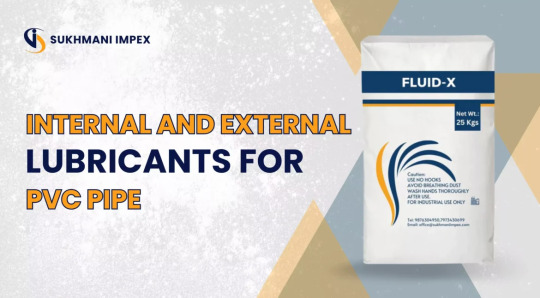
In today’s competitive manufacturing environment, every detail in your process matters—especially when it comes to PVC pipe production.
One of the most critical components that directly impact extrusion speed, surface quality, and equipment life is the use of the right lubricants. Whether you're running high-speed lines or specialty grades, internal and external lubricants can make a world of difference.
What Makes a Great PVC Lubricant?
Internal Lubricants
Reduce melt friction
Improve flow and dispersion
Enhance pipe strength and uniformity
External Lubricants
Minimize sticking to die walls
Improve pipe surface finish
Extend equipment life
These lubricants work together to increase output, reduce defects, and streamline your extrusion process.
Perfect for Industries Like:
Plumbing and water supply pipes
Electrical conduit production
Irrigation systems
Industrial and chemical piping
If you're searching for the best lubricant for PVC, make sure it delivers both performance and long-term reliability. A well-balanced formula reduces production issues and improves your bottom line.
👉 Read the full guide here: 🔗 https://sukhmaniimpex.com/what-are-internal-and-external-lubricants-for-pvc-pipe/
For bulk orders and technical guidance, email us at: [email protected]
Sukhmani Impex – Trusted by industry leaders for premium-grade PVC pipe lubricants that drive performance and precision.
#PVCManufacturing#PipeExtrusion#PVCpipeLubricant#BestLubricantForPVC#PlasticCompounding#InternalLubricants#ExternalLubricants#SukhmaniImpex#IndustrialSolutions#ManufacturingBlog#TumblrIndustryPosts
0 notes
Text
Plastic Tubes: Engineering Simplicity in a Complex World
Plastic tubes are simple in form yet remarkably diverse in function, serving as essential components across industries such as medical technology, construction, packaging, electronics, and consumer goods. They are flexible, durable, lightweight, and cost-effective—qualities that have made them indispensable in both industrial and everyday applications. This article explores their manufacturing process, functionality, advantages, and the challenges they present in terms of sustainability.Get more news about plastic tube,you can vist our website!
Composition and Manufacturing Plastic tubes are commonly made from a wide array of polymers, including polyethylene (PE), polyvinyl chloride (PVC), polypropylene (PP), and polytetrafluoroethylene (PTFE), among others. The choice of material depends on the application. For instance, medical-grade tubing requires high chemical resistance and biocompatibility, often achieved using PTFE or silicone-based compounds.
Manufacturing methods include extrusion—where molten plastic is shaped by being forced through a die to form a continuous tube—and injection molding, which is more typical for rigid or specially shaped tubes. Additives like UV stabilizers, colorants, and plasticizers can be included to enhance performance under specific conditions.
Everyday Applications Plastic tubes are present in nearly every part of modern life. In households, they serve as dispensers for toothpaste, ointments, and cosmetics. In gardening and plumbing, flexible tubes are used to carry water, chemicals, or air. Food and beverage industries rely on sanitary-grade plastic tubing to handle liquids safely.
In the medical sector, plastic tubes take on highly specialized roles—used in intravenous therapy, catheterization, respiratory devices, and surgical instruments. The lightweight and sterilizable nature of plastics makes them ideal for such sensitive uses.
Industrial and Technological Use In industries such as automotive manufacturing, construction, and electronics, plastic tubes function as conduits for wiring, fluid transmission, insulation, or structural elements. Cable management, fuel lines, and HVAC systems all depend on the reliable performance of engineered tubing.
Additionally, in laboratories and chemical processing plants, tubing made from chemically inert plastics is crucial to transport corrosive or temperature-sensitive substances safely.
Advantages and Challenges The primary advantages of plastic tubes lie in their adaptability, corrosion resistance, and low production cost. They outperform metal counterparts in weight and chemical tolerance, making them ideal for complex or mobile systems. However, their environmental impact remains a pressing concern.
Many plastic tubes are not readily recyclable due to their composite materials or contamination after use, especially in medical and industrial contexts. Single-use plastic tubes generate considerable waste, contributing to pollution and landfill buildup.
Toward a Sustainable Future Efforts to make plastic tubing more eco-friendly are underway. Bioplastics derived from renewable resources, such as PLA (polylactic acid), are gaining attention, though they currently have limitations in durability and heat resistance. Advances in mechanical and chemical recycling technologies also promise a more circular lifecycle for plastic tubing materials.
Manufacturers are increasingly exploring ways to design products for disassembly, reuse, or safe degradation. In parallel, regulatory frameworks in various regions are pushing industries to reduce dependency on virgin plastics and increase transparency in material sourcing.
0 notes
Text
Pipe Factories in Egypt
Here’s an enhanced, well-structured overview of pipe factories in Egypt, with no company names or external links, and supported by diverse citations:
At the heart of Egypt’s infrastructure development lies a robust pipe‐manufacturing sector specializing in plastic and ductile-iron products. Leveraging modern extrusion technology, factories produce PVC/UPVC, HDPE, PPR, GRP, and iron pipes to serve water, sewage, irrigation, gas, and industrial networks. Domestic production capacity has risen steadily, reducing import dependence—imports fell to 59.4 million USD in 2022 (down 17.8% since 2019) —while exports, particularly of HDPE, grew to capture key markets across Africa and beyond . Factories adhere to international standards (ISO, ASTM, DIN), employ pressure and mechanical testing for quality assurance, and increasingly embrace recycling of production scrap and energy-efficient processes. Located mainly in major industrial zones such as Giza’s Engineering Square , this sector is poised for continued growth—Cognitive Market Research projects Egypt’s HDPE pipe market at USD 44.62 million in 2024 with a 5.9% CAGR to 2031 .
Materials & Product Range
Egyptian pipe factories manufacture several key types:
PVC/UPVC for drinking water and sewerage, valued for corrosion resistance and light weight .
HDPE for high-pressure water and gas lines, prized for flexibility, impact strength, and recyclability .
PPR for hot/cold potable water, offering thermal and pressure tolerance .
GRP (glass-reinforced polyester) for large-diameter, heavy-load applications like drainage and industrial effluent.
Ductile Iron increasingly produced for heavy-duty infrastructure, combining strength with durability.
Manufacturing Process
Raw Material Preparation Granules are dried, filtered, and blended with stabilizers and colorants to meet strict performance specs .
Extrusion The mix is melted in twin-screw extruders and forced through precision dies to form continuous pipe lengths .
Cooling & Calibration Pipes pass through water baths and vacuum calibration tanks, ensuring tight dimensional tolerances.
Cutting & Labeling Lengths are cut automatically; each piece is stamped with diameter, wall thickness, and production date for traceability .
Quality Assurance & Standards
Pressure Testing: Verifies pipes remain leak-free under operating pressures .
Mechanical Testing: Assesses tensile strength, burst pressure, and impact resistance.
Chemical & Thermal Tests: Ensure compatibility with potable water and industrial fluids.
Standards Compliance: Factories conform to ISO, ASTM, and DIN norms to ensure global interoperability.
Economic & Environmental Impact
Import Trends: In 2022, Egypt’s imports of plastic pipes and fittings declined to 59.4 million USD, down 17.8% from 2019, reflecting stronger local output .
Export Performance: Egypt exports HDPE pipes to over 20 countries, with leading markets in the USA, Argentina, and Uganda, collectively accounting for 70% of volumes .
Sustainability Practices: Scrap from cutting and calibration is recycled; energy-efficient heating systems reduce carbon footprint.
Employment & Growth: The sector supports thousands of direct jobs and drives ancillary services in logistics and maintenance.
Key Applications
Municipal Water & Sewage: Reliable networks built with PVC, UPVC, and HDPE.
Agricultural Irrigation: Flexible HDPE systems for drip and sprinkler setups.
Gas Distribution: High-pressure HDPE and ductile-iron pipes ensure safe delivery.
Industrial & Chemical Lines: GRP and PPR pipes handle aggressive fluids and high temperatures.
Telecommunications: Pipes serve as underground conduits for fiber-optic and electrical cables.
Future Outlook
With national infrastructure initiatives and rising regional demand, Egypt’s pipe manufacturing is set for expansion. Continued investment in:
Advanced Extrusion Lines
Automated Quality Inspection
Sustainable Operations

0 notes
Text
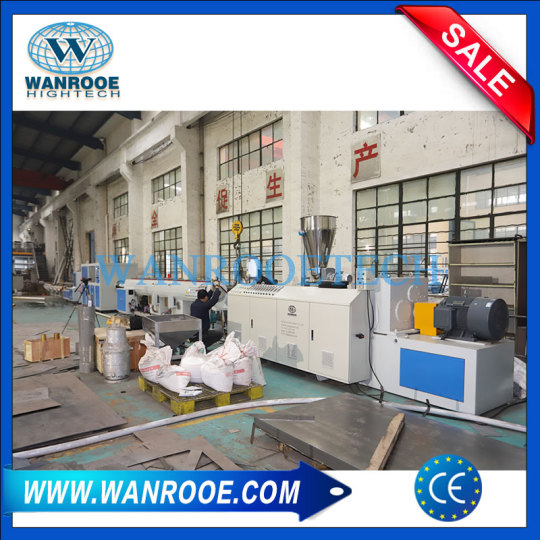
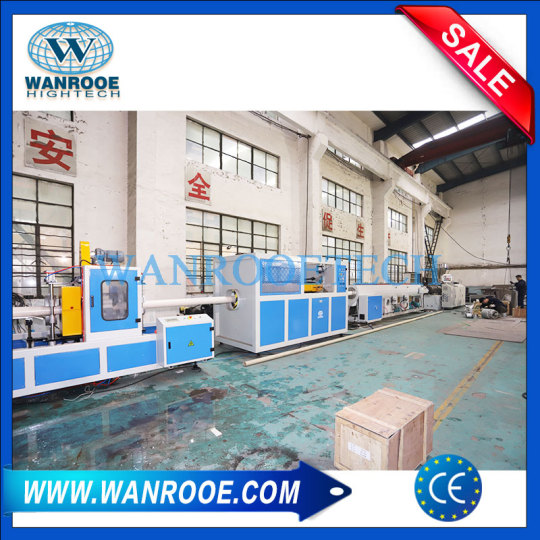

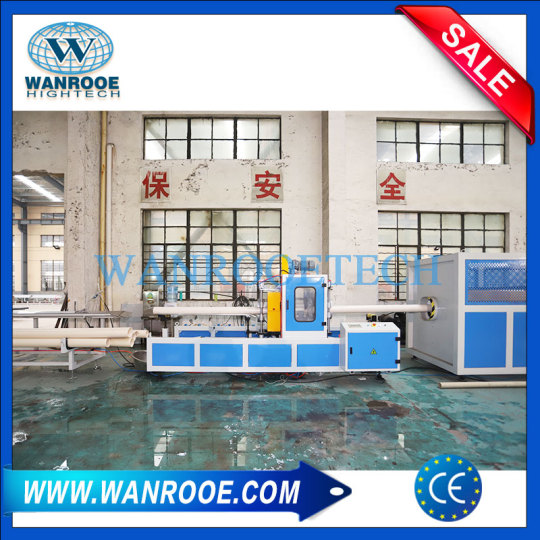
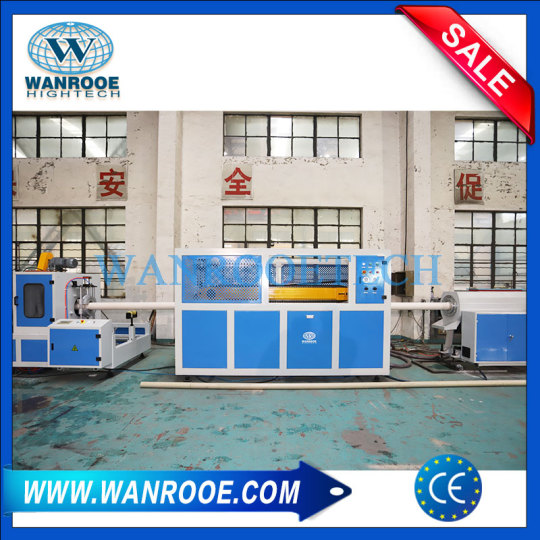
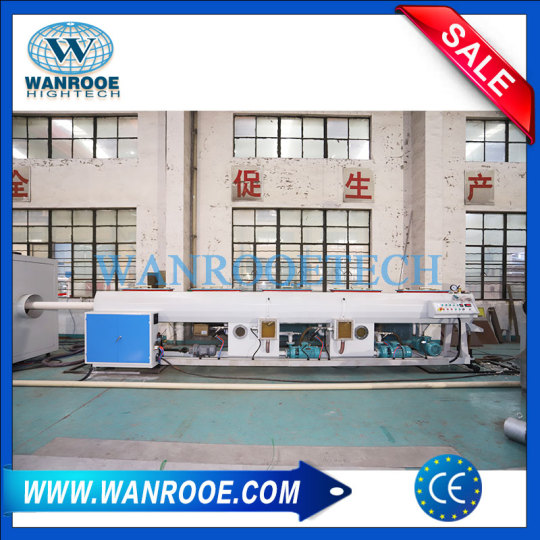
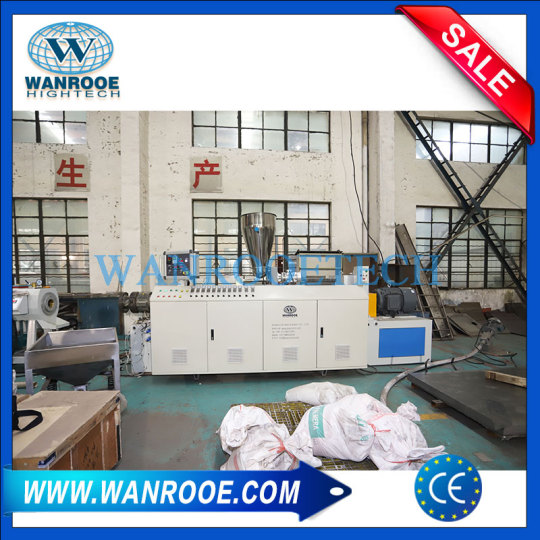
PVC plastic pipe material production line is mainly used in the area of agricultural water supply system, architectural water supply system, pavement of cables, etc. as well as PVC pipe material of all sorts of pipe caliber and wall thickness.
0 notes
Text
Hyphen Cables – Trusted LT XLPE Power Cables Manufacturers in India
When it comes to reliable and efficient power distribution, Low Tension (LT) XLPE Power Cables have become the standard for a wide range of industrial, commercial, and infrastructure projects. Among the top LT XLPE Power Cable manufacturers in India, Hyphen Cables stands out for its unwavering commitment to quality, performance, and customer satisfaction.
LT XLPE (Cross-Linked Polyethylene) cables are widely used for low-voltage power transmission (up to 1.1 kV). These cables offer several advantages over conventional PVC cables, including superior thermal stability, higher current carrying capacity, better resistance to chemicals and moisture, and longer service life. Recognizing these benefits, Hyphen Cables has invested in cutting-edge manufacturing technology to produce high-grade LT XLPE Power Cables that meet the evolving needs of the power sector.
Hyphen Cables uses high-conductivity aluminum or copper conductors and premium XLPE insulation, designed to perform in the most demanding conditions. Whether it's for industrial installations, utilities, residential complexes, or infrastructure development, their LT XLPE power cables manufacturers deliver consistent power with minimal losses and excellent protection against short circuits and voltage fluctuations.
All cables manufactured by Hyphen undergo stringent quality checks and comply with industry standards such as IS 7098 (Part 1) and relevant IEC specifications. Their advanced manufacturing facilities are equipped with modern extrusion lines, high-precision testing equipment, and a skilled engineering team that ensures every meter of cable meets the highest quality benchmarks.
What truly sets Hyphen Cables apart is its customer-centric approach and focus on innovation. They offer customized solutions based on client requirements, including various conductor configurations, insulation thickness, and armoring options. Their technical team provides end-to-end support, from cable selection and design to installation guidelines and after-sales service.
Additionally, Hyphen Cables emphasizes environmental responsibility and safety compliance, making their products suitable for sustainable and long-term power infrastructure projects.
With a strong presence across India and a growing portfolio of satisfied clients in sectors such as power distribution, construction, real estate, and manufacturing, Hyphen Cables has earned its reputation as a dependable partner in energy solutions.
For top-quality, durable, and efficient LT XLPE Power Cables Manufacturers, Hyphen Cables remains a leading name trusted by engineers, contractors, and developers alike.
Visit:- https://www.hyphencables.com/lt-xlpe-pvc-power-and-control-cables.html
0 notes
Text
Plastic Scrap Grinder Machine Manufacturer, Exporter
Plastic Scrap Grinder Machine Manufacturer, Exporter Plastic Waste Crushing Machine Manufacturer, Exporter https://www.invoitplast.com/plastic-scrap-grinder-machine/ Our Plastic Scrap Grinder Machine is a special addition for your delight with its high performance and cost effectiveness. They are best suitable for plastic grinding or crushing of Defected and rejected plastic products from Injection Moulding Machine, Blow Moulding Machine, Extrusion lines etc i.e. Chairs, Battery boxes, HDPE Drums, PVC Pipes & Fittings, Barrels, Jerry Cans, Household products, Plastic articles, Toys etc.
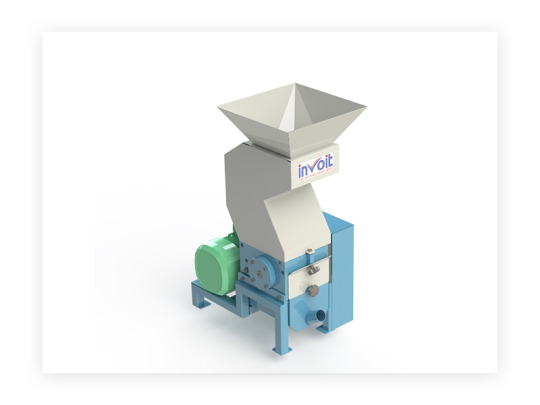
2 notes
·
View notes
Text
Concord Industries: Durable and Safe Iron Power Cords for Household and Commercial Use
Concord Industries: Trusted Manufacturer of High-Quality Iron Power Cords
Electric irons are one of the most commonly used appliances in households, laundries, and garment industries. Yet, the true performance and safety of an iron depend not only on its heating element or design but also on its power cord — the component that carries electricity directly to the appliance. At Concord Industries, we specialize in producing reliable, heat-resistant, and flexible iron power cords that ensure safe and uninterrupted operation, even with frequent use.
As a leading power cord manufacturer in India, Concord Industries is trusted by major appliance brands, OEMs, and repair vendors for delivering consistently high-quality cords that meet national and international safety standards.
Why Iron Power Cords Require Special Engineering
Iron power cords face demanding conditions compared to other appliance cords:
Continuous exposure to high temperatures
Regular bending and movement during use
Extended plug-in time during prolonged ironing sessions
Potential contact with moisture or fabric softeners
To withstand these challenges, Concord Industries engineers cords that offer exceptional heat resistance, mechanical flexibility, and electrical safety.
Key Features of Concord Iron Power Cords
High-Conductivity Copper Wires Made with pure, multi-strand copper to provide stable current flow and reduce overheating.
Heat and Flame-Resistant Insulation Outer sheathing made from high-grade PVC or rubber designed to withstand high temperatures.
Flexible Design Built to resist cracking and fraying during repetitive motion and handling.
ISI & RoHS Certified Compliant with safety and environmental standards for both domestic and export use.
Available in 2-Pin and 3-Pin Configurations Compatible with various models of dry and steam irons used in homes and industries.
Designed for Versatility and Durability
Concord’s iron power cords are ideal for:
Household electric irons
Commercial steam irons used in laundries and tailoring shops
Garment industry ironing units
Iron repair and spare parts retailers
Whether used in a small home setup or an industrial-scale laundry, these cords offer consistent performance, long life, and maximum user safety.
Customization for Appliance Brands and OEMs
Concord Industries works closely with iron appliance manufacturers and OEMs to provide tailor-made power cords. Customization includes:
Cable lengths to match different appliance sizes
Plug orientation (angled or straight)
Outer sheathing material and color
Brand-specific labeling and packaging
Bulk supply options for production lines or replacement markets
With in-house design and tooling, Concord ensures that every client receives a product that fits their exact requirements.
Advanced Manufacturing & Quality Testing
At Concord Industries, all iron power cords are produced in state-of-the-art manufacturing units, featuring:
High-speed cable extrusion lines
Automated plug molding machines
Crimping, sealing, and finishing stations
Flame, voltage, and bend-resistance testing labs
Each cord undergoes a multi-level quality check, including:
Voltage and insulation tests
Flame resistance assessments
Flexibility and tensile strength checks
Plug-pin durability evaluations
This ensures that every product leaving the facility meets Concord’s rigorous standards of excellence.
Sustainability and Compliance
Concord Industries is committed to responsible manufacturing. All iron power cords are:
RoHS compliant, free of hazardous substances
Produced through energy-efficient processes
Packaged using eco-friendly materials
This reflects Concord’s focus on building products that are not only safe for users but also safe for the environment.
Why Choose Concord Industries?
20+ years of experience in electrical manufacturing
Large-scale supply capacity for bulk and export orders
Fully certified products meeting ISI, RoHS, and CE standards
Tailored solutions for OEMs and appliance brands
On-time delivery and consistent product quality
Conclusion
A safe and efficient iron starts with a power cord that can handle heat, movement, and long hours of operation. Concord Industries delivers durable, certified, and high-performance iron power cords that serve both domestic and industrial needs with excellence.
For manufacturers, repair centers, or distributors looking for dependable iron power cord solutions — Concord Industries is your trusted partner for quality, safety, and innovation.
Visit:- https://concordindustries.in/products/power-cord/iron-power-cord/
0 notes
Text
Thermoform Packaging Market Growth Driven by Demand for Lightweight, Cost-Effective, and Customizable Packaging Solutions
The Thermoform Packaging Market is undergoing significant expansion as manufacturers and end-use industries increasingly prioritize lightweight, cost-effective, and customizable packaging solutions. With applications across diverse sectors such as food and beverages, pharmaceuticals, electronics, and consumer goods, thermoform packaging has emerged as a preferred choice due to its design flexibility, production efficiency, and sustainable attributes. As companies seek to enhance product shelf appeal and reduce operational costs, the adoption of thermoform packaging is expected to grow steadily over the coming years.

Market Overview
Thermoforming involves heating a plastic sheet to a pliable temperature, molding it into a specific shape, and trimming it to create usable packaging. The technique is widely used for manufacturing clamshells, trays, blisters, and containers, offering a balance of durability and cost-effectiveness. The global shift towards convenient and eco-conscious packaging formats has propelled the thermoform packaging market into a favorable position, with increased investments in R&D and automation.
Market Growth Drivers
A primary driver of market growth is the demand for lightweight packaging, which not only reduces transportation costs but also aligns with sustainability goals by minimizing material usage. Thermoform packaging solutions are significantly lighter than alternative rigid packaging, making them ideal for logistics optimization.
The cost-effectiveness of thermoform packaging is another critical factor. The thermoforming process allows for large-scale production at lower costs, making it attractive for manufacturers aiming to reduce their packaging budgets without compromising on quality. Additionally, the minimal material waste generated during the process enhances its economic appeal.
Customization capabilities further fuel market growth. Thermoform packaging can be tailored to meet specific product requirements in terms of size, shape, color, and labeling. This versatility is especially valued in the food and healthcare sectors, where product differentiation and protection are key.
Market Trends and Innovations
The market is witnessing growing interest in sustainable thermoforming materials, such as polylactic acid (PLA), polyethylene terephthalate (PET), and recycled PET (rPET). These materials cater to the increasing regulatory and consumer pressure for eco-friendly packaging. Biodegradable and recyclable thermoform options are becoming integral to packaging strategies, especially among environmentally-conscious brands.
Another emerging trend is the adoption of automation and advanced tooling in thermoform production lines. This development enables greater precision, faster turnaround times, and cost savings. Coupled with digital printing and smart packaging technologies, thermoform packaging is now positioned to offer enhanced aesthetics and interactivity, which boosts consumer engagement.
Market Challenges
Despite its advantages, the thermoform packaging market faces certain restraints. Fluctuating raw material prices, especially petroleum-based resins like PET and PVC, can affect profit margins. Moreover, concerns over plastic waste continue to challenge the market, pushing manufacturers to innovate with biodegradable options.
Additionally, limited barrier properties of some thermoformed plastics can be a constraint in packaging applications requiring high moisture or oxygen resistance. However, advancements in co-extrusion technologies and multilayer films are addressing this limitation.
Market Outlook
The thermoform packaging market is expected to maintain a positive trajectory, driven by the growing demand for packaging that is customizable, lightweight, and cost-effective. Growth opportunities are particularly strong in emerging economies, where rising disposable incomes and urbanization are boosting demand for packaged goods.
Technological advancements and greater integration of sustainable materials will continue to shape the future of the market. Companies that invest in innovation, automation, and eco-friendly practices are poised to gain a competitive edge.
Conclusion
In an evolving packaging landscape, thermoform packaging stands out as a flexible and efficient solution. Its combination of affordability, design adaptability, and growing sustainability options ensures that it will remain a vital component of modern packaging strategies across industries.
0 notes
Text
Versatile and Efficient: The Growing Demand for PVC Profiles
In the evolving landscape of construction materials, Polyvinyl Chloride (PVC) profiles have emerged as indispensable components across residential, commercial, and industrial sectors. These thermoplastic extrusions are not only reshaping how structures are built but are also setting new standards for efficiency, durability, and sustainability.Get more news about Pvc Profile,you can vist our website!
What Are PVC Profiles? PVC profiles are pre-formed shapes made through an extrusion process, where heated PVC resin is pushed through molds to create continuous, uniform sections. These profiles come in various shapes and sizes and are engineered for specific applications such as window and door frames, cable ducts, wall panels, and even decorative trims.
Their versatility lies in both their form and function. PVC profiles can mimic traditional building materials like wood or metal, offering aesthetics without compromising on performance or longevity.
Advantages of PVC Profiles One of the primary reasons for the widespread adoption of PVC profiles is their durability. Unlike wood, PVC does not rot, warp, or degrade when exposed to moisture, making it ideal for harsh environments or wet areas. It also offers excellent resistance to chemical corrosion, UV rays, and insect infestation.
Another key advantage is the low maintenance requirement. PVC profiles retain color and shape over long periods, needing minimal upkeep. This reduces lifecycle costs and makes them particularly attractive for high-use structures such as schools, hospitals, and offices.
Additionally, PVC profiles are lightweight, which simplifies transportation and installation. The extrusion process also allows for custom shapes and designs, meeting the unique needs of architects and contractors.
Environmental Impact and Recyclability PVC has often been scrutinized for its environmental impact; however, advancements in polymer technology have made modern PVC profiles more sustainable. Many manufacturers now use lead-free stabilizers and incorporate recycled content into new profiles. Moreover, PVC is fully recyclable—used profiles can be ground down and reprocessed into new products, minimizing waste.
Some production facilities even operate closed-loop recycling systems, collecting leftover materials and reintroducing them into the manufacturing line, reducing the environmental footprint of each profile produced.
Applications in Architecture and Beyond The most common application of PVC profiles is in uPVC (unplasticized PVC) window and door frames, favored for energy efficiency and design flexibility. Their airtight properties help improve insulation, reduce noise, and contribute to overall building sustainability.
Beyond construction, PVC profiles are utilized in the furniture industry, automotive interiors, and electrical casing. Their non-conductive and flame-retardant properties make them suitable for safe, long-lasting use in various engineering contexts.
Future Outlook: Smart Designs and Sustainability As construction trends move toward eco-friendly and modular solutions, PVC profiles are adapting. Some manufacturers are now incorporating smart features like integrated lighting channels, hidden wiring conduits, and antimicrobial surfaces. These innovations are especially popular in healthcare and commercial interiors.
The ongoing development of bio-based plasticizers and greener production methods is also expected to improve the environmental profile of PVC products. Governments and construction codes increasingly support recyclable and sustainable materials, positioning PVC profiles as a continued leader in cost-effective and high-performance design.
Conclusion PVC profiles represent a fusion of engineering precision and material innovation. Their unmatched versatility, combined with ongoing environmental improvements, ensures their relevance in a rapidly changing industry. Whether framing a window, lining a wall, or organizing cables, PVC profiles continue to offer functional and aesthetic value where durability, design, and sustainability intersect.
0 notes
Text

The Secret Of Manufacturing High Quality Waterproof Doors
Waterproof doors have become an indispensable part of the decoration of modern homes and commercial spaces. It not only needs to have good moisture resistance, corrosion resistance, but also in terms of aesthetics, environmental protection and durability to meet the multiple expectations of users. So, a real high-quality waterproof door is actually how to manufacture out? Behind this, both the rigorous screening of raw materials, but also on the process of excellence. This article will take you in-depth understanding, from material selection to process, high-quality waterproof door birth of the whole process.

The Core Foundation: The Choice Of High-Quality Materials
Waterproof door performance is good or bad, depends first on the raw materials used. Common waterproof door materials are PVC, aluminum alloy, WPC (wood-plastic composite) and so on. Among them, WPC as a new environmentally friendly materials in recent years, highly respected, both the natural texture of wood and plastic waterproof characteristics, become the mainstream market.
WPC doors are usually made of wood fiber and polymer resin composite, with the following advantages:
Waterproof and moisture-proof: the material itself does not absorb water, and is extremely suitable for wet environments such as bathrooms, kitchens and basements;
Strong corrosion resistance: it is not easy to rust and mildew, effectively prolonging the service life;
Environmental protection without formaldehyde: no formaldehyde adhesive added in the production process, more healthy and safe;
High stability: not easy to deformation, cracking, even in the southern hot and humid or northern dry areas can maintain structural stability.
Manufacturers of high-quality waterproof doors set strict standards in the selection phase, the density of raw materials, ratios, moisture content and impurity control will be accurately controlled to ensure excellent basic performance.

Precision Manufacturing: Process Determines The Height Of Quality
Materials are good, no scientific process, can not make a really good quality products. Waterproof door manufacturing process is mainly divided into the following steps:
1. Raw material proportioning and extrusion molding
The production of WPC door panels begins with a homogeneous mixture of wood flour, plastic granules and additives, which are melted at high temperatures and then pressed and molded by extruders. This process determines the density and structural stability of the door panel. Whether the extrusion mold design is reasonable, whether the temperature and pressure control is accurate, will directly affect the surface flatness and inner strength of the door panel.
2. High temperature curing and cooling
Extruded door panels need to be cooled and cured immediately to prevent bending or deformation caused by internal temperature difference. High-quality manufacturers usually use automatic cooling lines and thermostatic control systems to make the door panels fast and maintain geometric stability.
3. Surface treatment and aesthetic design
The surface of waterproof door should not only have good visual effect, but also have the performance of wear and scratch resistance. Through lamination, thermal transfer, UV spraying or 3D embossing technology, the door panel can show a variety of styles such as wood grain, stone grain, cloth pattern, etc., to meet different decoration needs. Especially in the UV spraying link, the use of environmentally friendly water-based paint and nano antifouling coating can further enhance the service life of the door body.
4. Precise cutting and splicing
In order to ensure the accurate size and smooth lines of each door, modern factories commonly use CNC cutting equipment to automatically complete the cutting, slotting, drilling and other processes according to CAD drawings. The splicing of door frames and doors adopts high-strength gluing or seamless splicing technology, which not only facilitates installation, but also improves the overall stability and sealing performance.
5. Quality control testing and assembly packaging
A high-quality waterproof door needs to go through a number of strict tests before leaving the factory, including waterproof performance test, strength test, surface adhesion test. Qualified before entering the final assembly, hardware installation and packaging stage. Professional anti-collision protection, edge treatment and moisture-proof packaging materials to ensure that the product is not damaged during transportation and storage.

The Strength Of The Factory: The Foundation Of High-Quality Protection
Excellent waterproof door manufacturing is not only reflected in the product, but also from a strong production system and professional team. A strong factory usually has the following characteristics:
Automated production lines: improve production efficiency and consistency;
Professional R & D team: constantly innovate product features and appearance design;
Perfect quality control system: to ensure that every door meets the standard;
Environmentally friendly manufacturing concept: reduce the impact on the environment from the source and practice green development.
Some well-known brands will also display their production processes, product testing videos, user cases and other content on their official websites, LinkedIn and social platforms to help consumers build trust and enhance their brand image.

Conclusion: The Real Quality, Stand The Test Of Time
A waterproof door is good or bad, not only the appearance and price decision, but also lies behind the harsh choice of materials and sophisticated manufacturing process. From raw materials to the factory, each link is cohesive with the manufacturer's dedication to quality. Choosing a high-quality waterproof door is not only the pursuit of decorative effect, but also responsible for the comfort of daily life and family health.
In the future, with the development of material science and technology and intelligent manufacturing, waterproof door will not only have functionality, but also in the design aesthetics and environmental performance to a new level. For users, recognizing professional brands, understanding their manufacturing process and choosing from experienced WPC door suppliers are the first step to getting the ideal product.
0 notes
Text
Supplier of PET Bottle Scrap Washing Line
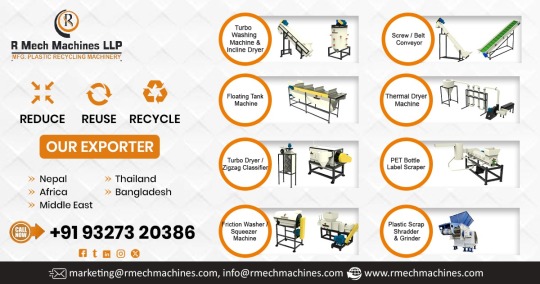
R Mech Machine LLP is a leading and prominent Manufacturer, Exporter and Supplier of PET Bottle Scrap Washing Line in Jharkhand and Odisha. Our manufacturing unit is based in Ahmedabad, Gujarat, India. R Mech Machine LLP provides PET Bottle Scrap Washing Line, HDPE/PP/PVC/PPCP Scrap washing line, LDPE/PP Film Scrap Washing Line. We design our machines for high performance, durability, and versatility to meet the ever-growing demands of the global recycling industry. We engineer this line to process post-consumer PET bottles into clean PET flakes, ideal for reuse in textiles, packaging, and more. This washing line efficiently processes rigid plastics like detergent bottles, milk jugs, and industrial plastic waste into clean, recyclable granules. We specifically designed it for handling soft plastics such as agricultural films, shopping bags, and packaging films. Features: Automated Control System: Smart PLC-based control panels for efficient and user-friendly operation. High-Efficiency Friction Washers & Float-Sink Tanks: Advanced washing technology ensures optimal separation and cleaning. Stainless Steel Contact Parts: Rust-resistant and food-grade compliant components. Energy-Efficient Design: Optimized motors and low-energy consumption systems reduce operating costs. Robust Construction: Built with premium-grade materials to ensure durability in demanding environments. Benefits: Superior Cleaning Efficiency: Delivers high-purity output with minimum residual contamination. Reduced Labor Costs: High degree of automation minimizes manual intervention. Flexible Input Material Handling: Capable of processing mixed, colored, and printed plastic waste. Minimal Water Usage: Closed-loop water systems ensure reduced water consumption and better environmental performance. Long Service Life: Heavy-duty design and minimal maintenance ensure consistent long-term operation. Return on Investment: Increases profitability through efficient plastic recovery and resale. Applications & Uses: Textile Industry Packaging Sector Film Extrusion Injection Molding Waste Management Firms FAQs Q1: What materials can be processed in a single washing line? A1: We offer both mono and multi-material configurations, depending on the customer’s input material and end use. Q2: Can your lines be customized to fit space constraints? A2: Yes, our engineers design modular systems tailored to specific space and capacity requirements. Q3: What is the typical installation time? A3: Depending on complexity, installations take 20 to 60 days from the date of site readiness. Q4: Do you offer operator training? A4: Yes, we provide comprehensive on-site or remote training with detailed operational manuals. R Mech Machine LLP is a Supplier of PET Bottle Scrap Washing Line in Jharkhand and Odisha including locations Ranchi, Jamshedpur, Dhanbad, Hazaribagh, Bokaro, Deoghar, Koderma, Giridih, Garhwa, Gumla, Bhubaneshwar, Cuttack, Rourkela, Angul, Mayurbhanj, Puri, Sambalpur, Brahmapur. Contact us today for a free consultation or a quote. View Product: Click here Read the full article
0 notes
Text
An Overview of uPVC Pipe Manufacturing Companies: Processes, Quality, and Trends

Unplasticized polyvinyl chloride (uPVC) has become one of the most widely used materials in the production of pipes due to its durability, chemical resistance, and long service life. uPVC pipe manufacturing companies play a critical role in supplying high-quality products for applications ranging from potable water distribution and sewage systems to industrial and agricultural use. This article provides an in-depth look at the key aspects of uPVC pipe manufacturing—from raw materials and production processes to quality control measures and sustainability initiatives—without mentioning any specific company names.
1. Raw Materials and Production Processes
uPVC pipe production begins with the careful selection of high-grade PVC resin, which forms the primary material for manufacturing. To achieve the desired mechanical properties, manufacturers blend the resin with carefully measured additives such as heat stabilizers, lubricants, and pigments. These components are mixed in precise ratios to ensure uniformity and consistency in the final product.
The production process typically involves the following key steps:
Dry Mixing: The raw materials are mixed thoroughly in powder or granular form to achieve an even distribution of additives.
Plasticizing: The mixed materials are fed into an extruder, where they are heated under controlled conditions (usually between 180°C and 220°C) until they melt into a homogenous plastic mass.
Extrusion: The molten uPVC is forced through a die, forming it into the characteristic tube shape. The design of the die is critical as it determines the pipe’s dimensions, wall thickness, and surface finish.
Cooling and Calibration: Once extruded, the pipe passes through a cooling system—often a water bath or air-cooling setup—to solidify and maintain its shape. Calibration tools ensure that the pipe meets the required dimensional tolerances.
Cutting and Finishing: The continuous pipe is then cut into standard lengths and subjected to final finishing processes, such as surface treatment or printing of specifications, before being packaged for shipment.
2. Quality Control and Certifications
Quality is a central focus for uPVC pipe manufacturers. Rigorous quality control measures are implemented at every stage of production to ensure the final product meets international standards. Key quality assurance steps include:
Raw Material Testing: Incoming materials are tested for purity and consistency. Any variation in resin or additive quality can directly impact the pipe’s performance.
Process Monitoring: During extrusion, parameters such as temperature, pressure, and screw speed are continuously monitored. Advanced control systems help maintain consistency and reduce defects.
Final Product Inspection: Finished pipes undergo extensive testing for critical dimensions, burst pressure, impact resistance, and joint integrity. These tests confirm that the pipes can withstand both the internal pressures during operation and the external environmental stresses.
Certification: Many manufacturers adhere to globally recognized quality standards and obtain certifications from independent testing agencies. Certifications from organizations such as ASTM, ISO, and national standards bodies provide further assurance of product reliability and safety.
3. Environmental Considerations and Sustainability Initiatives
In today’s market, sustainability is as important as performance. uPVC pipe manufacturing companies are increasingly focused on reducing their environmental footprint through various initiatives:
Energy-Efficient Production: Modern production lines are designed to optimize energy consumption. Lower processing temperatures and automated control systems contribute to reduced energy use.
Recyclability: One of uPVC’s significant environmental advantages is its recyclability. Manufacturers promote a circular economy by ensuring that scrap material and end-of-life pipes can be reprocessed into new products.
Emission Reduction: The manufacturing processes for uPVC pipes typically produce fewer emissions compared to traditional materials such as metal or concrete. Efforts to use green energy sources and improve process efficiency further lower the carbon footprint.
Waste Minimization: Strict quality control and advanced production techniques minimize waste generation during manufacturing. Any off-specification material is often recycled within the production cycle.
4. Technological Innovations and Future Trends
The uPVC pipe manufacturing industry continues to evolve with advancements in both material science and production technology. Notable innovations include:
Enhanced PVC Formulations: New formulations offer improved mechanical strength, flexibility, and resistance to UV radiation. These formulations ensure that pipes perform reliably even under challenging conditions.
Automation and Smart Manufacturing: Integration of automation, IoT (Internet of Things), and AI (Artificial Intelligence) allows for real-time monitoring and adjustments during production. This leads to higher consistency, fewer defects, and increased production efficiency.
Co-Extrusion Techniques: Some manufacturers are adopting co-extrusion processes to create multi-layer pipes with enhanced properties. These layers can provide additional protection against UV light, chemicals, and mechanical stresses.
Research and Development: Ongoing R&D efforts focus on developing more sustainable production methods, reducing energy consumption, and exploring alternative eco-friendly additives that further improve the environmental profile of uPVC pipes.
5. Market Dynamics and Competitive Landscape
uPVC pipe manufacturing companies operate in a competitive global market where factors such as product quality, reliability, and sustainability drive customer choice. While companies differentiate themselves through proprietary manufacturing techniques and innovation, the overall industry trends point toward increased standardization, improved quality controls, and a strong emphasis on environmental stewardship. The industry's ability to adapt to changing regulatory landscapes and consumer demands is essential for long-term success.
0 notes